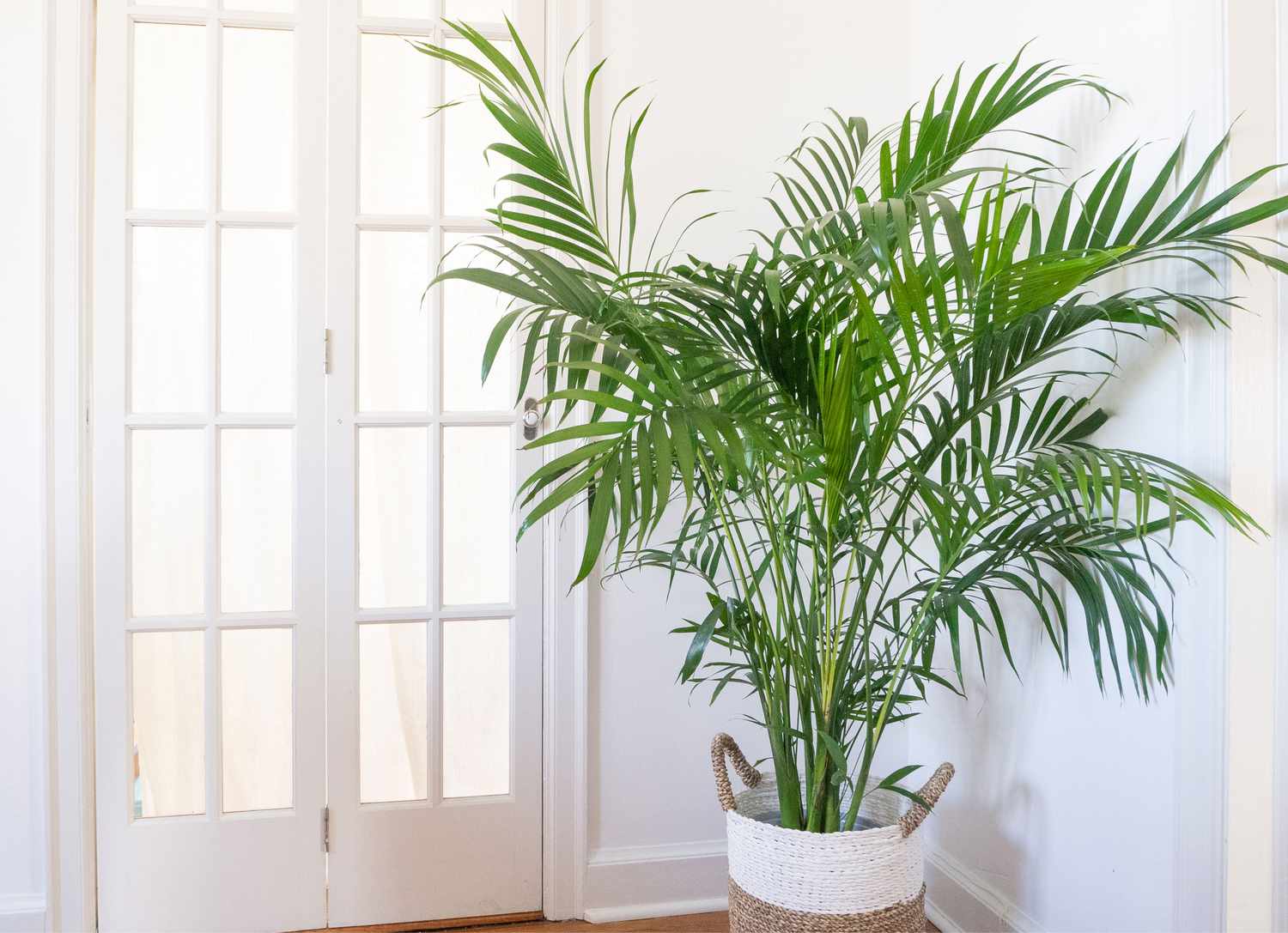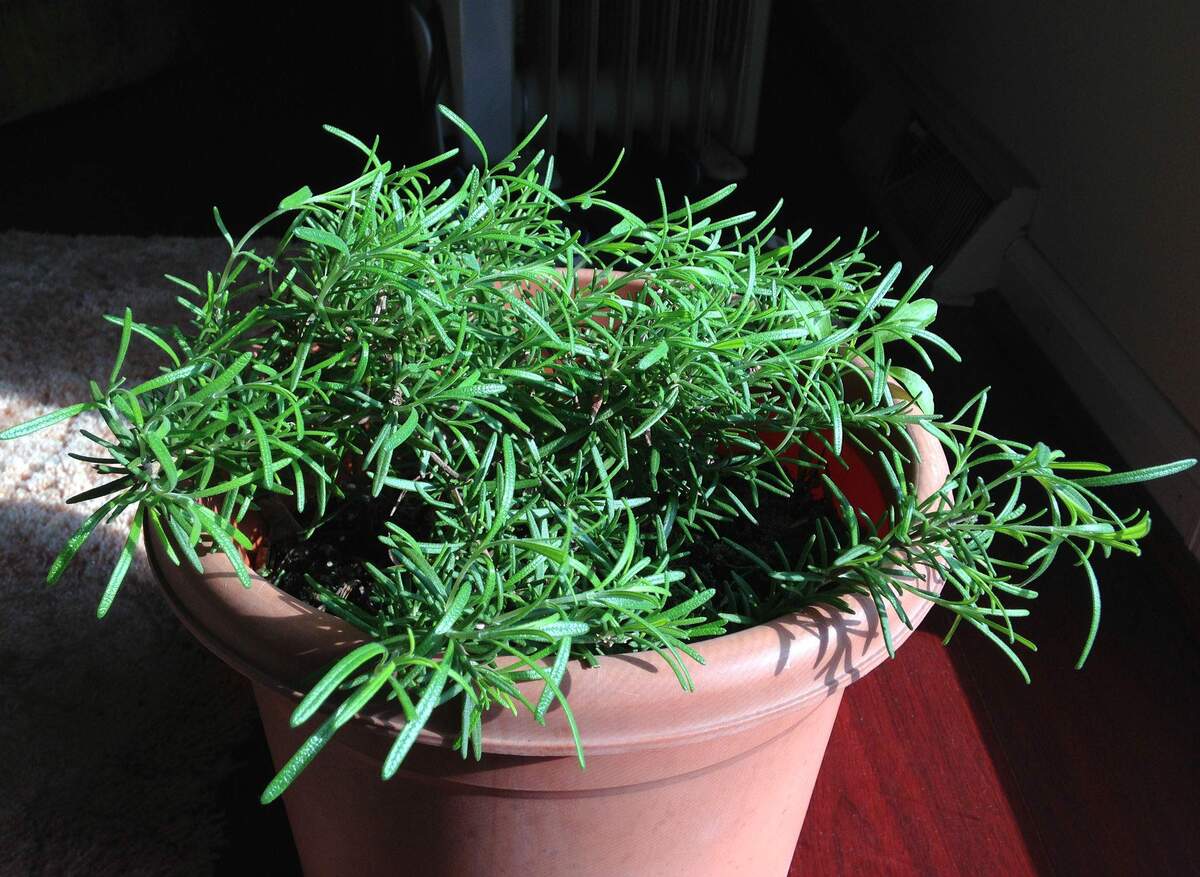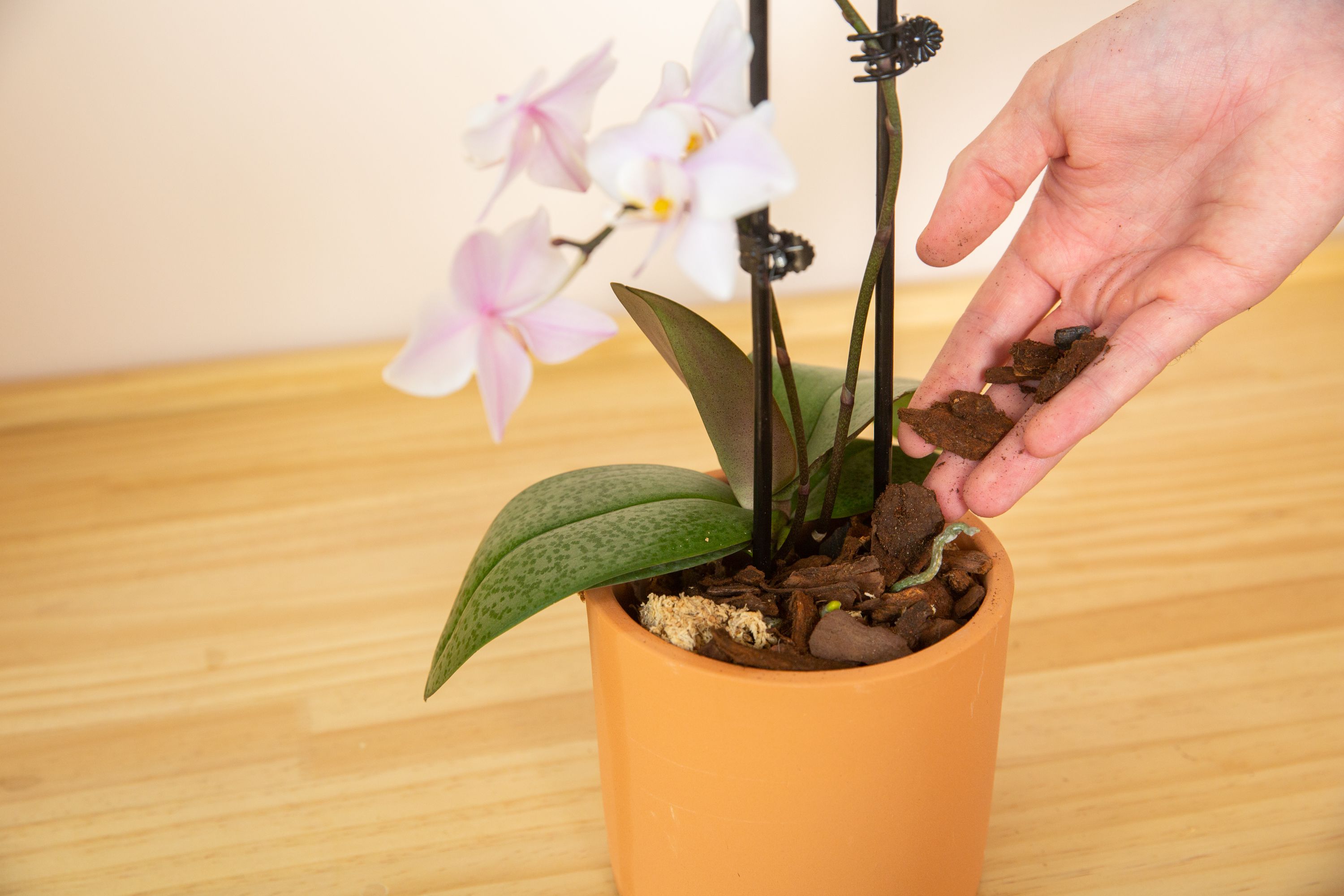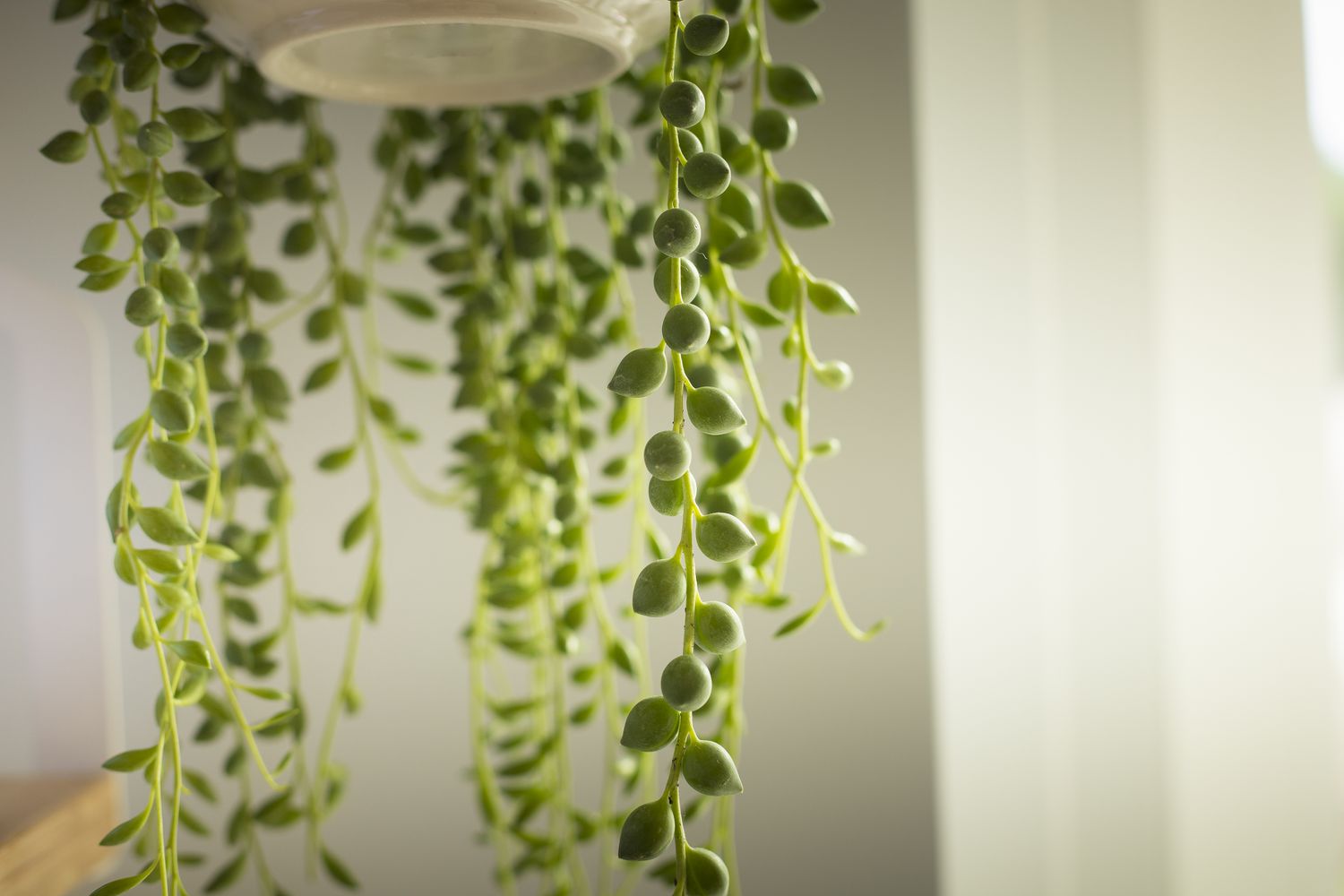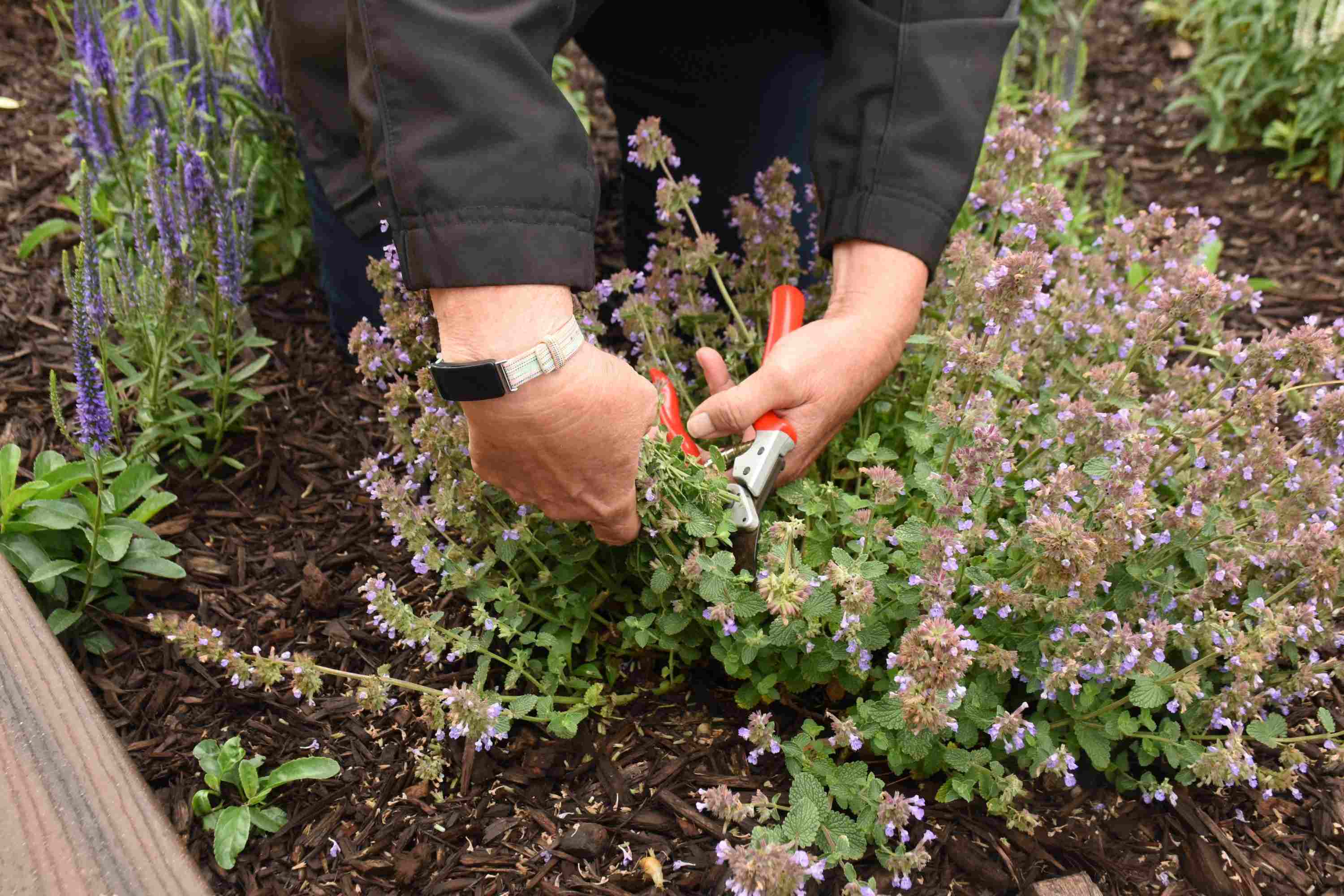Home>Gardening Techniques>Plant Care>How To Care For Seedlings
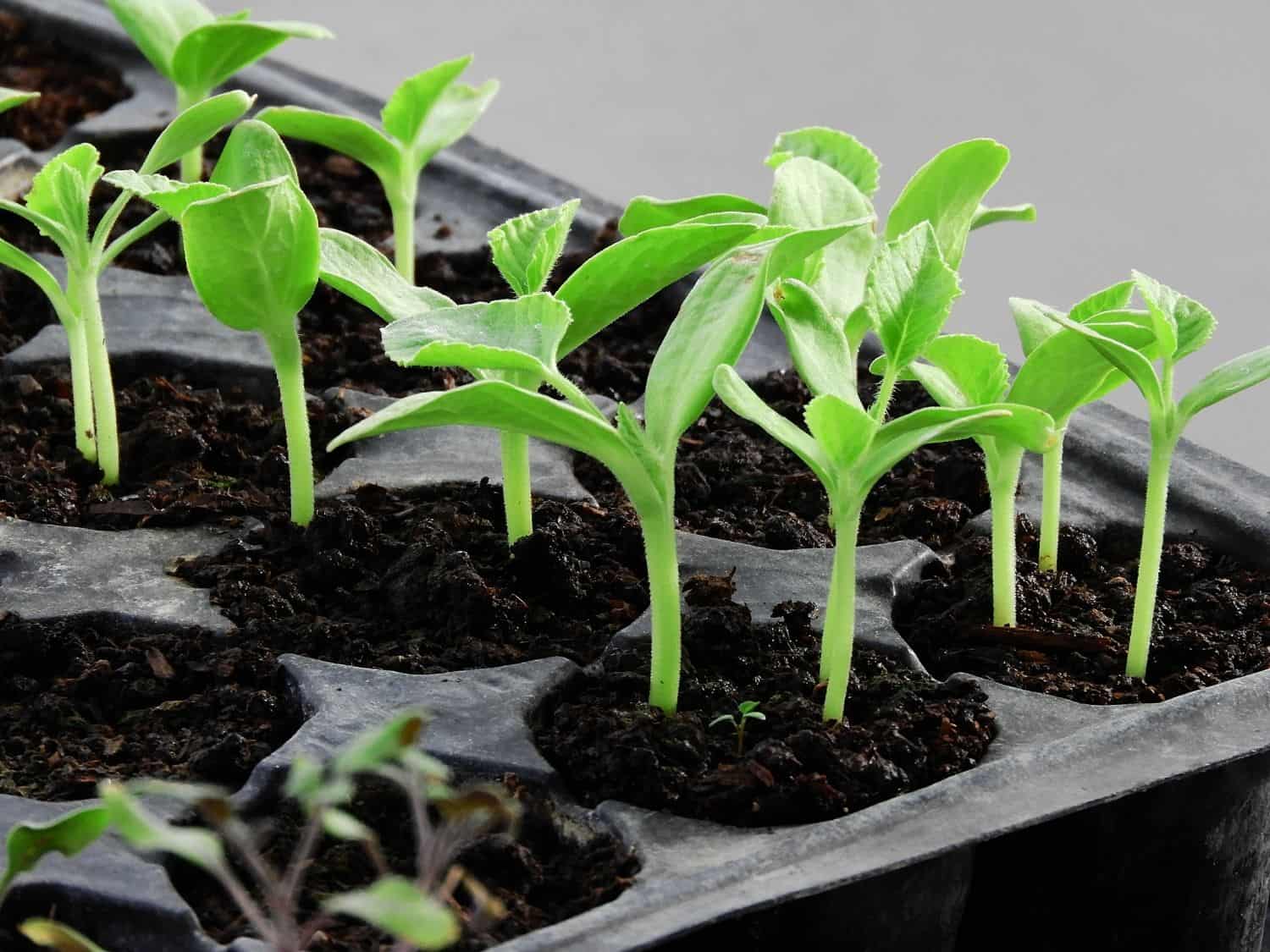

Plant Care
How To Care For Seedlings
Modified: February 9, 2024
Learn how to care for seedlings and ensure their healthy growth with our comprehensive guide on plant care. Discover essential tips and techniques for nurturing your seedlings and maximizing their potential.
(Many of the links in this article redirect to a specific reviewed product. Your purchase of these products through affiliate links helps to generate commission for Chicagolandgardening.com, at no extra cost. Learn more)
Table of Contents
- Introduction
- Importance of Seedling Care
- Choosing the Right Location for Your Seedlings
- Providing the Ideal Lighting Conditions
- Watering Techniques for Seedlings
- Temperature and Humidity Control
- Feeding and Fertilizing Seedlings
- Transplanting Seedlings
- Protecting Seedlings from Pests and Diseases
- Common Mistakes to Avoid When Caring for Seedlings
- Conclusion
Introduction
Welcome to the world of plant care! Whether you are a seasoned green thumb or a beginner in the world of gardening, one thing is certain – the care and nurturing of seedlings is a crucial step in ensuring the success of your plants. Seedlings are delicate and vulnerable, and they require specific attention and care to grow into thriving plants. In this article, we will delve into the essential aspects of seedling care and provide you with valuable tips on how to give your seedlings the best possible start.
Seedlings are young plants that have just emerged from their seeds. They are in their most delicate stage and require extra care to establish strong roots and develop healthy foliage. The care you provide during this stage will directly impact the future growth and productivity of your plants, whether you are growing flowers, vegetables, or herbs. By understanding the importance of proper care and taking the necessary steps, you can ensure that your seedlings thrive and flourish.
Proper seedling care involves a combination of factors such as choosing the right location, providing adequate lighting, watering correctly, maintaining appropriate temperature and humidity levels, fertilizing appropriately, and protecting against pests and diseases. Each of these aspects plays a crucial role in promoting healthy growth and preventing stress or damage to the seedlings.
By following the guidelines and tips provided in this article, you can enhance your gardening skills and the overall success of your plants. So, let’s dive in and discover the secrets of caring for seedlings!
Importance of Seedling Care
Seedling care is the foundational step in the journey of a plant’s life. It sets the stage for healthy growth and development, ultimately determining the plant’s overall vigor and productivity. Proper care during this crucial stage is essential for several reasons.
First and foremost, seedlings are highly vulnerable to external factors. They lack the robustness and resilience of mature plants, making them susceptible to stress, disease, pests, and unfavorable environmental conditions. By providing optimal care, you can help fortify their defenses and increase their chances of survival.
In addition, seedling care helps establish strong and healthy root systems. Healthy roots are the key to nutrient uptake, water absorption, and overall plant stability. By nurturing seedlings properly, you encourage the development of vigorous root systems, setting the stage for strong and productive plants.
Furthermore, the care and attention you provide during the seedling stage directly impact the quality and yield of the mature plants. Seedlings given proper care are more likely to grow into robust, high-yielding specimens, whether you are growing vegetables, flowers, or herbs. Investing time and effort in seedling care can yield bountiful rewards in the form of healthy, thriving plants.
Moreover, seedling care sets the trajectory for the future growth and development of the plant. It establishes a solid foundation for the plant’s structure, foliage, and overall health. By promoting optimal growth conditions early on, you increase the plant’s chances of reaching its full potential, both in terms of size and productivity.
Lastly, seedling care is an opportunity to connect with your plants on a deeper level. By dedicating time and attention to their needs, you develop a nurturing relationship with them. This intimate connection with your plants can enhance your gardening experience and bring a sense of fulfillment and satisfaction as you witness their growth and thrive.
Overall, the importance of seedling care cannot be overstated. It is the fundamental step in ensuring the success of your plants and plays a crucial role in their overall health, vitality, and productivity. By investing in proper care, you set the stage for a garden filled with vibrant, flourishing plants that will bring you joy and satisfaction for seasons to come.
Choosing the Right Location for Your Seedlings
Choosing the right location for your seedlings is crucial for their overall growth and development. The right environment will provide the necessary conditions for healthy root establishment, strong foliage growth, and optimal sunlight absorption. Here are key factors to consider when selecting the ideal location for your seedlings:
1. Adequate sunlight: Most seedlings require ample sunlight to thrive. Look for a location that receives at least 6-8 hours of direct sunlight per day. If you’re growing indoors, place your seedlings near a south-facing window or use supplemental grow lights to provide sufficient light.
2. Protection from extreme weather: Avoid exposing seedlings to harsh weather conditions such as strong winds, heavy rain, or extreme temperatures. Choose a location that offers some natural protection, such as near a wall, under a tree canopy, or in a greenhouse.
3. Proper air circulation: Seedlings need good air circulation to prevent the build-up of excess moisture and reduce the risk of fungal diseases. Choose a location that allows for adequate airflow to promote healthy plant growth and prevent issues such as damping off.
4. Accessibility for maintenance: Consider the practicality of the location in terms of watering, feeding, and monitoring your seedlings. Ensure that the location is easily accessible for routine care and maintenance tasks, such as watering, pruning, and pest control.
5. Soil quality: If you’re planting your seedlings directly in the ground, assess the soil quality of the chosen location. Soil should be well-drained, loose, and rich in organic matter. If the soil is poor, consider amending it with compost or using raised beds or containers filled with a high-quality potting mix.
6. Future growth potential: It’s important to consider the long-term growth of your seedlings when choosing a location. Ensure that there is enough space for their roots to expand and accommodate their eventual size. Avoid planting them too close to larger plants or structures that may shade or compete for resources.
By carefully selecting the right location for your seedlings, you set them up for success from the start. Providing optimal sunlight, protecting them from extreme weather, maintaining proper air circulation, ensuring accessibility for maintenance, and considering soil quality and future growth potential will enable your seedlings to thrive and flourish.
Providing the Ideal Lighting Conditions
Proper lighting is essential for the healthy growth and development of seedlings. Light plays a critical role in photosynthesis, the process by which plants convert light into energy. When it comes to providing the ideal lighting conditions for your seedlings, here are some key factors to consider:
1. Intensity: Seedlings require adequate light intensity to promote strong and sturdy growth. If you’re growing indoors, supplemental grow lights are highly recommended to provide the necessary intensity. Look for lights specifically designed for plant growth, such as fluorescent or LED grow lights, as they emit the right spectrum of light for optimal seedling development.
2. Duration: Seedlings typically require 12-16 hours of light per day. This mimics the long daylight hours of spring and promotes healthy growth. If natural sunlight is insufficient, use timers to ensure that your seedlings receive the proper duration of light. Consistency is key in providing a stable light cycle for optimal growth.
3. Distance: The distance between the light source and the seedlings is crucial. Placing the light too close can cause heat stress and damage the plants, while placing it too far can lead to weak, leggy growth. Follow the manufacturer’s recommendations or monitor the growth of your seedlings closely to ensure they are receiving enough light without being too close to the source.
4. Light spectrum: Different stages of plant growth require different light spectrums. During the seedling stage, it is important to provide light in the blue spectrum, as it promotes strong leaf development. Look for lights that have a balanced spectrum, including both blue and red wavelengths, or consider using specific grow light bulbs for seedlings.
5. Natural sunlight: If you have the option to grow seedlings outdoors, natural sunlight can be beneficial. Choose a location that receives the appropriate amount of direct sunlight, typically 6-8 hours per day. However, be cautious of exposing delicate seedlings to intense afternoon sun, as it may cause sunburn. Gradually acclimate your seedlings to direct sunlight by starting with shorter periods and gradually increasing exposure.
Remember to monitor your seedlings’ response to the light and make adjustments as needed. Seedlings that receive the proper lighting conditions will exhibit strong and compact growth, with vibrant green foliage. On the other hand, inadequate lighting can lead to leggy, weak plants that are more prone to disease and pests.
By providing the ideal lighting conditions, whether with supplemental grow lights or natural sunlight, you are ensuring that your seedlings have the energy they need to develop strong stems, healthy leaves, and robust roots. This sets the stage for successful growth and prepares your seedlings for transplanting into the garden.
Watering Techniques for Seedlings
Proper watering is essential for the healthy growth and establishment of seedlings. Seedlings are highly susceptible to both overwatering and underwatering, so finding the right balance is crucial. Here are some key techniques to consider when watering your seedlings:
1. Watering frequency: Seedlings have small root systems and can dry out quickly, so it’s important to water them regularly. Check the moisture level of the soil daily by inserting your finger about an inch into the soil. If it feels dry, it’s time to water. However, be cautious not to overwater, as soggy soil can lead to root rot and other issues.
2. Watering technique: When watering seedlings, it’s best to use a gentle and targeted approach. Avoid drenching the entire tray or container, as this can lead to water pooling and uneven moisture levels. Instead, use a small watering can or a spray bottle to deliver water directly to the base of the seedlings. This allows the roots to absorb the water efficiently.
3. Bottom watering: Another effective technique is bottom watering. This involves filling a tray or saucer with water and allowing the seedling containers to sit in the water. The soil will gradually absorb the water from the bottom, ensuring thorough and consistent hydration. However, be sure to remove the containers from the water once the topsoil becomes moist to avoid oversaturation.
4. Water temperature: Seedlings prefer water that is at or slightly above room temperature. Avoid using cold water, as it can shock the delicate seedlings. Fill your watering can or container ahead of time and allow it to come to room temperature before watering your seedlings.
5. Proper drainage: Adequate drainage is crucial for seedlings to prevent waterlogging and the risk of root rot. Ensure that your containers or trays have drainage holes to allow excess water to escape. If using bottom watering, be sure to monitor the water level and remove any excess standing water after the seedlings have absorbed what they need.
6. Mist to increase humidity: Some seedlings benefit from increased humidity, especially those that require a more humid environment, such as tropical plants or certain herbs. Use a spray bottle filled with water to mist the foliage and create a slightly more humid microclimate around the seedlings. Be mindful not to mist excessively, as this can promote the growth of fungal diseases.
Remember, it’s better to underwater than to overwater seedlings. Overwatering can lead to root rot, dampening off, and other issues. Pay close attention to the moisture levels of the soil and adjust your watering routine accordingly. With practice, you’ll develop a better sense of the moisture needs of your seedlings.
By following these watering techniques, you’ll help your seedlings develop strong, healthy root systems and promote vigorous growth. Consistent and proper watering is one of the key factors in seedling care and sets the foundation for successful growth and transplanting into your garden.
Temperature and Humidity Control
Proper temperature and humidity control are essential for the successful growth and development of seedlings. These factors influence the germination process, root establishment, and overall health of the young plants. Here are some key considerations when it comes to temperature and humidity control for seedlings:
1. Temperature range: Seedlings have specific temperature requirements for optimal growth. Most seeds germinate best within a specific temperature range, which can vary depending on the plant species. It’s important to research the ideal temperature range for the specific seeds you’re planting and provide an environment within that range.
2. Heat mats: To provide consistent warmth to your seedlings, consider using heat mats. These mats are placed underneath seed trays or pots and provide gentle bottom heat to promote germination and root growth. Heat mats are especially useful for starting seeds in cooler climates or during the colder months.
3. Room temperature: If you’re growing seedlings indoors, it’s crucial to maintain adequate room temperature. Most seedlings thrive in temperatures between 65-75°F (18-24°C) during the day and slightly cooler temperatures at night. Avoid exposing them to extreme temperature fluctuations, drafts, or sudden temperature changes, as these can stress the young plants.
4. Humidity levels: Proper humidity levels are important for seed germination and early seedling development. Some plants, particularly those originating from tropical regions, require higher humidity. To increase humidity, you can use a humidity tray by placing a tray of water near the seedlings or use a humidifier in the growing area. However, be cautious not to create excessively high humidity, as this can cause fungal diseases.
5. Ventilation: Good air circulation is crucial for preventing mold, mildew, and other fungal issues. Proper ventilation helps remove excess humidity and allows fresh air to circulate around the seedlings. Be sure to provide adequate ventilation by using fans or opening windows when weather permits.
6. Seasonal adjustments: As seedlings grow, they may require adjustments to temperature and humidity levels. For example, as they develop more established root systems, they are generally more tolerant of slightly cooler temperatures. Gradually acclimate your seedlings to outdoor conditions, if applicable, to prepare them for transplanting into the garden.
By controlling temperature and humidity, you create an optimal environment for seedlings to thrive. The right temperature range and humidity levels promote healthy growth, reduce the risk of diseases, and help establish strong root systems. Monitoring and adjusting these factors as needed will ensure the best possible start for your seedlings.
Feeding and Fertilizing Seedlings
Feeding and fertilizing seedlings is essential for providing them with the necessary nutrients to grow into healthy, robust plants. While seedlings initially rely on the nutrients present in the seed, they eventually require additional nourishment as they develop. Here are some key considerations when it comes to feeding and fertilizing seedlings:
1. Starting with a quality growing medium: Use a high-quality seed starting mix or potting soil that is specifically formulated for seedlings. These mixes are usually lighter, well-draining, and enriched with essential nutrients to support early growth.
2. Slow-release fertilizers: Consider incorporating slow-release fertilizers into the growing medium when sowing seeds or transplanting seedlings. These fertilizers gradually release nutrients over time, providing a steady supply of essential elements for healthy growth. Follow the instructions provided by the fertilizer manufacturer for proper application and dosage.
3. Liquid fertilizers: As seedlings grow and develop, they may benefit from supplemental liquid fertilizers. Dilute a balanced water-soluble fertilizer according to the package instructions and use it to water your seedlings once they have developed their true leaves. Be mindful not to over-fertilize, as this can lead to burning the delicate roots.
4. Organic alternatives: If you prefer to use organic fertilizers, there are several options available. Compost tea, seaweed extract, fish emulsion, or other organic fertilizers can provide a nutrient boost to your seedlings. Always follow the instructions for organic fertilizers and ensure they are appropriate for seedlings.
5. Timing: Timing is essential when it comes to fertilizing seedlings. It’s best to wait until the plants have a few sets of true leaves before introducing fertilizers. This is usually around 2-4 weeks after germination. Starting too early can overwhelm the delicate seedlings, while delayed fertilization can lead to nutrient deficiencies.
6. Dilution: Whether using slow-release or liquid fertilizers, it’s crucial to carefully follow the recommended dosage and dilution instructions. Over-fertilizing can lead to nutrient imbalances, burning of the roots, or stunted growth. Remember, it’s always better to use a little less fertilizer than to overdo it.
7. Gradual transition to organic matter: As your seedlings grow, you can start incorporating organic matter such as compost into their growing medium. Gradually mix small amounts of compost into the soil or use compost as a top dressing around the seedlings. This provides additional nutrients and improves soil structure.
Feeding and fertilizing seedlings appropriately ensures that they have a steady supply of the essential nutrients they need for healthy growth. By using a quality growing medium, incorporating slow-release or liquid fertilizers at the appropriate time and dosage, and potentially adding organic matter, you can provide your seedlings with the nourishment they require to thrive and transition successfully into their next growth stages.
Transplanting Seedlings
Transplanting seedlings is a critical step in their journey from a controlled indoor environment to the outdoor garden. This process allows the seedlings to transition to a larger space, establish stronger roots, and ultimately thrive in their new surroundings. Here are some key considerations when it comes to transplanting seedlings:
1. Timing: Timing is crucial when transplanting seedlings. The seedlings should have developed a strong root system and have several sets of true leaves before being transplanted. This typically occurs when the seedlings are around 4-6 weeks old, but may vary depending on the specific plant variety.
2. Harden off seedlings: Before transplanting, it’s important to gradually acclimate seedlings to outdoor conditions in a process called hardening off. Start by placing the seedlings in a sheltered outdoor area for a few hours each day, gradually increasing the exposure over a period of 7-10 days. This helps the seedlings adjust to sunlight, wind, and temperature fluctuations.
3. Choose the right transplanting location: Select a suitable location in your garden that meets the specific requirements of the plant. Consider factors such as sunlight, soil quality, drainage, and spacing needs. Avoid overcrowding and provide enough space for each seedling to grow and develop to its full potential.
4. Prepare the planting hole: Dig a hole that is wide and deep enough to accommodate the seedling’s root system. Gently loosen the soil at the bottom of the hole to promote root penetration and growth. If the soil is compacted or poor in quality, consider amending it with compost or organic matter to improve nutrient availability and drainage.
5. Transplant with care: Handle the seedlings with care to avoid damaging the delicate stems or roots. Hold the seedling by its leaves, not the stem, and gently lift it from its container or seed tray. Place the seedling into the prepared hole, ensuring that the top of the root ball is level with or slightly below the soil surface. Fill the hole with soil, gently firming it around the root ball to eliminate air pockets.
6. Water thoroughly: After transplanting, water the seedlings thoroughly to help settle the soil around the roots and provide hydration. Apply water at the base of the plant, avoiding excessive watering on the foliage. This encourages the seedlings to establish their roots in the new soil and reduces transplant shock.
7. Provide post-transplant care: Once the seedlings are transplanted, it’s important to continue caring for them to ensure their successful establishment. Monitor the soil moisture levels, provide adequate sunlight, and protect them from extreme weather conditions. Mulching around the seedlings can help conserve moisture and suppress weed growth.
Transplanting seedlings is a crucial step in their journey towards full maturity. By timing the transplant correctly, hardening off the seedlings, choosing a suitable location, preparing the planting hole, handling the seedlings with care, watering thoroughly, and providing post-transplant care, you are setting the stage for their successful development in the garden. With proper care and attention, your transplanted seedlings will have the opportunity to grow into thriving and productive plants.
Protecting Seedlings from Pests and Diseases
Protecting seedlings from pests and diseases is crucial to ensure their healthy growth and prevent damage that can hinder their development. Seedlings are particularly vulnerable to attacks from pests and infections at their delicate stage. Here are some key strategies to protect your seedlings:
1. Clean and sterilize: Start with clean pots, trays, and tools to avoid introducing pests and diseases to your seedlings. Before sowing seeds or transplanting seedlings, wash containers with soap and water, and sterilize them with a solution of one part bleach to nine parts water. This helps eliminate any lingering pathogens.
2. Proper spacing: Avoid overcrowding seedlings, as this can create a favorable environment for pests and diseases to spread. Giving each seedling enough space allows for better air circulation and reduces the chance of pests or diseases transferring from one plant to another.
3. Identify and monitor pests: Regularly inspect your seedlings for signs of pest activity. Look for chewed leaves, holes, discoloration, or webbing. Identify the pests causing damage and promptly take appropriate measures to control them. Popular pests that target seedlings include aphids, caterpillars, snails, and slugs.
4. Natural pest control: Consider using natural methods to control pests. For example, handpicking larger pests like caterpillars or using sticky traps to catch flying insects can be effective. Introduce beneficial insects like ladybugs or lacewings that prey on common garden pests. Neem oil or insecticidal soap can also help control pests while minimizing harm to beneficial insects.
5. Disease management: Preventing and managing diseases is vital for seedling health. Start with disease-resistant varieties whenever possible. Avoid overwatering, as excessive moisture can lead to fungal diseases. Provide good air circulation by spacing seedlings and using fans. If disease symptoms appear, promptly remove and destroy affected seedlings to prevent further spread.
6. Cultural practices: Practicing good cultural habits can help prevent pest and disease problems. Avoid working with seedlings when they are wet, as this can spread diseases. Water at the base of the plants rather than overhead to reduce humidity and minimize disease spread. Properly dispose of any debris or plant material that may harbor pests or pathogens.
7. Organic treatments: If necessary, opt for organic treatments to control pests and diseases. Organic insecticidal soaps or botanical sprays can target pests, while copper-based fungicides can help manage fungal diseases. Always follow the instructions on the product label and ensure they are suitable for use on seedlings.
By implementing these protective measures, you can safeguard your seedlings and promote their healthy growth. Regular vigilance, prompt pest identification, natural pest control methods, disease management, and good cultural practices all contribute to creating a safe and thriving environment for your seedlings to flourish.
Common Mistakes to Avoid When Caring for Seedlings
Caring for seedlings requires attention to detail and a proactive approach to ensure their successful growth. However, there are common mistakes that many gardeners make when caring for seedlings. By being aware of these pitfalls, you can avoid them and give your seedlings the best possible care. Here are some common mistakes to avoid:
1. Overwatering: One of the most common mistakes is overwatering seedlings. It’s crucial to strike a balance between providing adequate moisture and avoiding waterlogged soil. Overwatering can lead to root rot, damping off, and other diseases. Instead, monitor the moisture level of the soil and water only when it feels dry about an inch deep.
2. Underwatering: Conversely, underwatering is also a common mistake. Allowing the soil to become too dry can cause stress to seedlings and hinder their growth. Be mindful of their water needs, particularly during hot or dry spells. Regularly check the moisture level and adjust your watering schedule accordingly.
3. Insufficient lighting: Inadequate light is another mistake that can result in weak, leggy seedlings. Be sure to provide enough light for your seedlings, whether through natural sunlight, supplemental grow lights, or a combination of both. Insufficient light can lead to stunted growth and poor development.
4. Poor ventilation: Seedlings need proper air circulation to prevent the buildup of excess moisture and reduce the risk of fungal diseases. Avoid placing seedlings in overly enclosed or stagnant environments. Ensure there is sufficient air movement in the growing area by using fans or opening windows when weather permits.
5. Incorrect spacing: Overcrowding seedlings is a common mistake that can prevent proper air circulation and lead to increased competition for resources. Give each seedling enough space to grow and develop. Follow the recommended spacing guidelines for the specific plant varieties you are growing.
6. Improper transplanting: Transplanting seedlings too early or improperly can cause stress and damage to the delicate plants. Wait until the seedlings have developed a strong root system and several sets of true leaves before transplanting. Handle the seedlings gently and ensure they are planted at the appropriate depth in well-prepared soil.
7. Neglecting pest and disease management: Ignoring the signs of pest and disease infestations is a mistake that can severely impact the health and growth of seedlings. Regularly inspect your seedlings for any pests or signs of disease, and take appropriate action to control and manage these issues promptly. Prevention is key, so incorporate preventative measures into your care routine.
8. Applying too much fertilizer: Excessive fertilizer applications can lead to nutrient imbalances, burning of the roots, and stunted growth. Follow the recommended dosage and application instructions for any fertilizers you use on your seedlings. It’s better to start with less than to over-fertilize.
By avoiding these common mistakes and taking a proactive approach to caring for your seedlings, you can help them thrive and develop into healthy, robust plants. Pay attention to their specific needs, monitor their growth closely, and make adjustments as necessary. With the right care, your seedlings will have a solid foundation for successful growth and a bountiful harvest.
Conclusion
Caring for seedlings is a vital and rewarding part of gardening. By providing the right conditions, you can give your seedlings the best chance of becoming strong, healthy plants. From choosing the right location and providing optimal lighting to watering correctly, controlling temperature and humidity, and protecting against pests and diseases, each aspect of seedling care plays a crucial role in their development.
Remember to choose a location that provides the necessary light, protection, and accessibility for maintenance. Consider the specific lighting requirements of your seedlings, whether using natural sunlight or supplemental grow lights. Water your seedlings appropriately, avoiding both overwatering and underwatering. Control temperature and humidity to create a favorable environment for growth.
Feeding your seedlings with appropriate fertilizers and providing organic matter when necessary helps provide essential nutrients. Transplant your seedlings at the right time and handle them gently to ensure a successful transition. Protect them from pests and diseases by practicing good sanitation, monitoring for signs of trouble, and implementing natural pest control methods.
Lastly, be mindful of common mistakes to avoid, such as overwatering, insufficient lighting, poor ventilation, incorrect spacing, improper transplanting, neglecting pest and disease management, and over-fertilizing. By learning from these mistakes, you can set your seedlings up for success.
Caring for seedlings requires patience, attention to detail, and a nurturing approach. As you witness the growth and development of your seedlings into thriving plants, you’ll experience the joy and satisfaction of cultivating nature’s beauty. Embrace the process, learn from each experience, and continue to expand your plant care knowledge. With proper care and dedication, your seedlings will thrive, bringing you a bountiful harvest and the joy and fulfillment that gardening provides.
